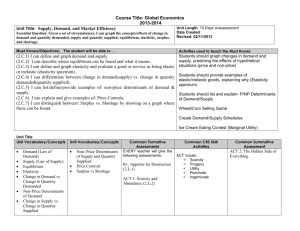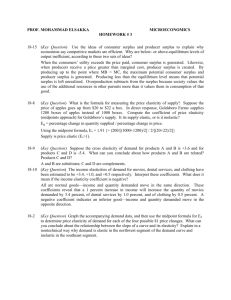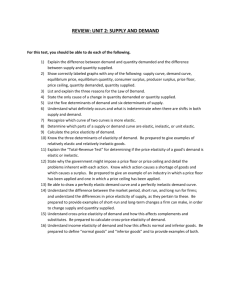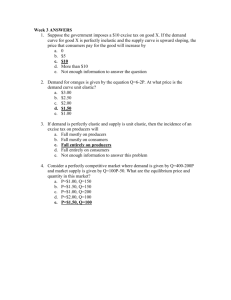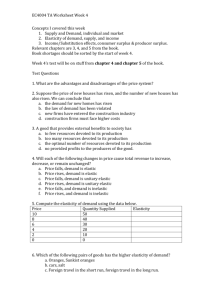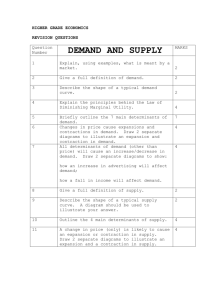1. Demonstrate how the intersect of supply and demand curves
advertisement
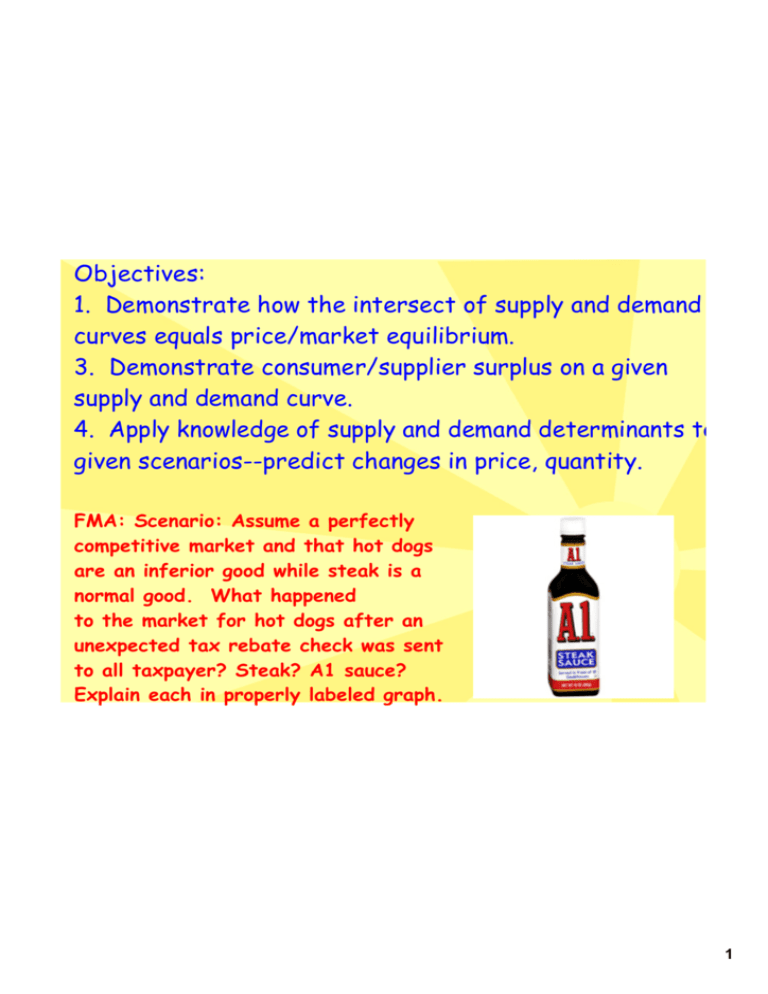
Objectives: 1. Demonstrate how the intersect of supply and demand curves equals price/market equilibrium. 3. Demonstrate consumer/supplier surplus on a given supply and demand curve. 4. Apply knowledge of supply and demand determinants to given scenarios--predict changes in price, quantity. FMA: Scenario: Assume a perfectly competitive market and that hot dogs are an inferior good while steak is a normal good. What happened to the market for hot dogs after an unexpected tax rebate check was sent to all taxpayer? Steak? A1 sauce? Explain each in properly labeled graph. 1 Activities: 1. FMA/Attendance 2. FMA Discussion 3. Worksheet/Check 4. Notes: Diminishing Marginal Utility, Consumer Surplus; Producer Surplus, Floors/Ceilings/Elasticity 5. Quiz--Supply and Demand. 6. Test Tuesday--Supply/Demand Determinants 2 Notes: Diminishing Marginal Utility-Each successive unit of a product yields less and less usefulness. Therefore, consumers will only purchase more if price gets better. Examples: How many houses would you want to own? At $300,000? At $200,000? At 100,000? This is the underlying reason for the law of demand. We want more at low prices; less at high. 3 4 5 6 7 Elasticity of Demand (and Supply) Sometimes people are more responsive to changes in price than others. Elastic Demand (or supply)--when a change in price causes a big change in quantity demanded What are some things people might be very responsive to change in price? Inelastic Demand (or supply)--when a change in price causes a small change in quantity demanded. 8 Do you think these could happen? Any examples you can think of? Perfectly Elastic Key­if a good has a large number of very, very, very close (that is, perfect) substitutes. Example­­paper clip from a specific company. Life saving drug? 9 Attachments 5 supply and demand 1.ppt



